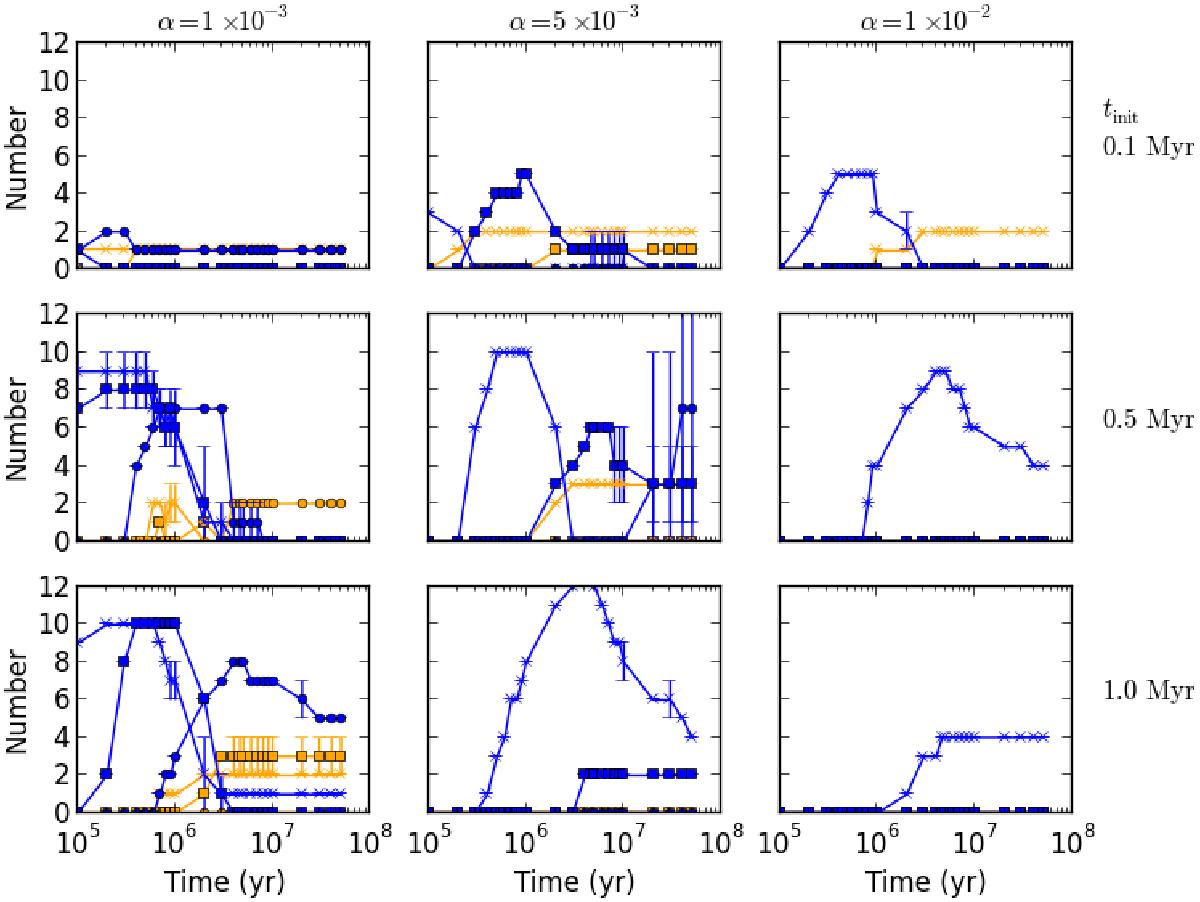Fig. 9

Evolution of the average number of planets per system for different combinations of α and tinit in simulations without migration. The orange and blue lines show the giant planets (≥0.1 MJ ~ 30 ME) and Earths or Super-Earths (1.0 ME−0.1 MJ), respectively. The cross, square, and circle correspond to the stellar metallicities of [Fe/H] = 0.5, 0.0, and –0.5, respectively. Giant planets do not form in high-viscosity and low-mass discs. The formation efficiency of all types of planets show some dependency on the stellar metallicity (see text).
Current usage metrics show cumulative count of Article Views (full-text article views including HTML views, PDF and ePub downloads, according to the available data) and Abstracts Views on Vision4Press platform.
Data correspond to usage on the plateform after 2015. The current usage metrics is available 48-96 hours after online publication and is updated daily on week days.
Initial download of the metrics may take a while.


